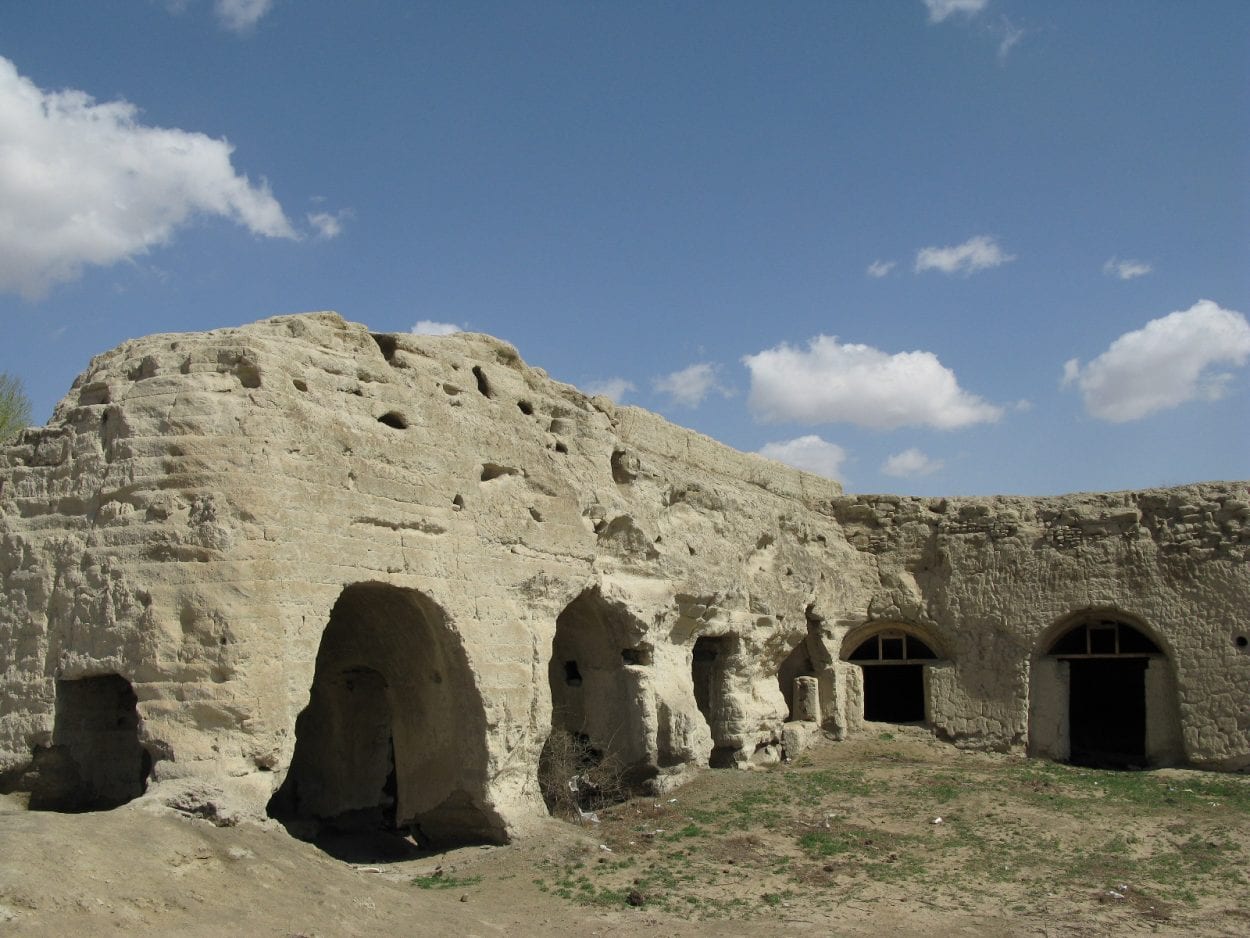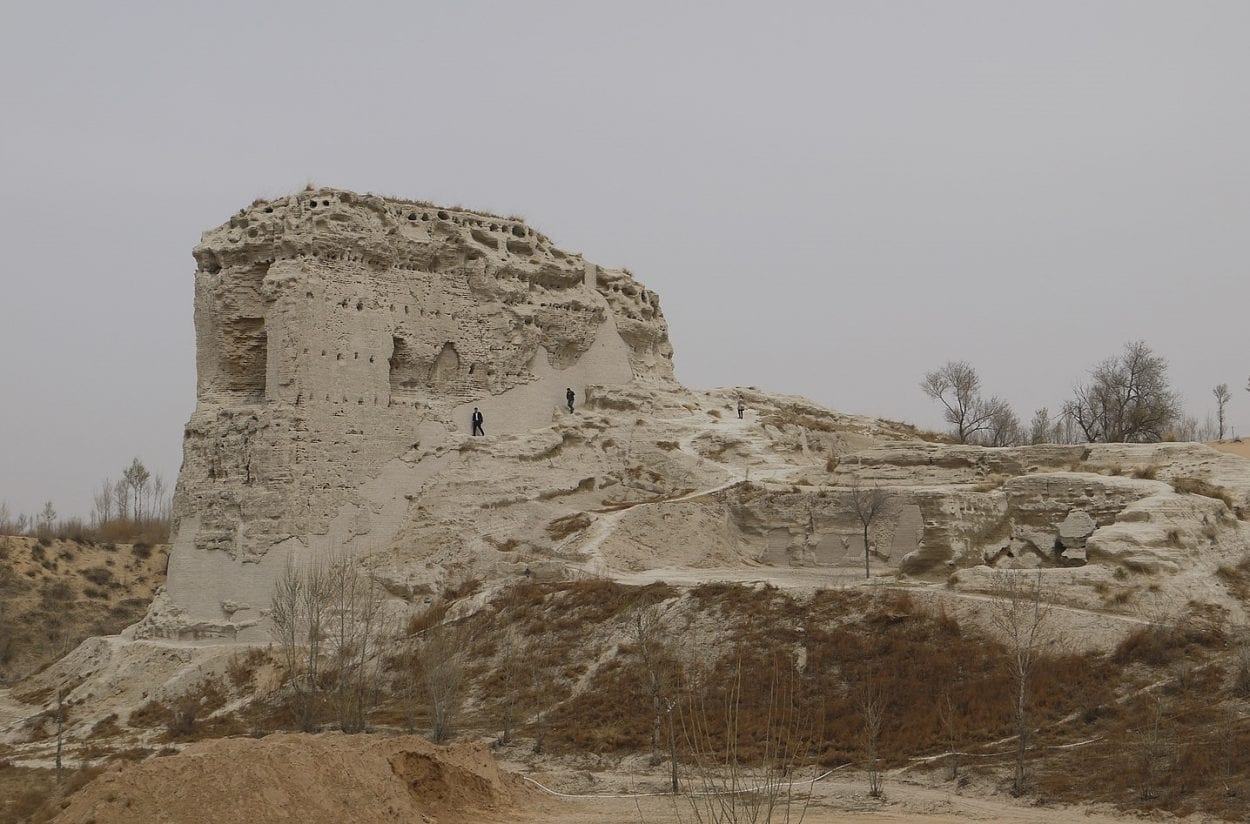Tongwancheng was the capital of the Xia Kingdom, founded by the Xiongnu people at the southern edge of the Maowusu Sands of the Ordos Desert, in present-day Inner Mongolia.
The Xiongnu were a tribal confederation of nomadic peoples who emerged from the eastern Eurasian Steppe during the 3rd century BC. The Xiongnu developed a powerful state bordering the Chinese Han empire, demarcated by the Great Wall of China.
In AD 407, a branch of the Xiongnu established the kingdom of Xia during the Sixteen Kingdoms period. Xia was ruled over by Helian Bobo, a Tiefu Xiongnu who founded his capital in the heart of the Ordos region from AD 413, with the intention to be lord of 10,000 states (“Tong” means “unite,” while “wan” means 10,000).
Helian Bobo commissioned his general Chigan Ali as the chief architect, who conscripted up to 100,000 Xiongnu to build the city over a period of six years using sand, white clay earth, and powdered rice.

The city consisted of three districts centred on a lake, encircled by a large outer wall that ran a length of 6 km. In the northern part of the city was the palace district, whilst an inner district housed the government offices and the homes of the city elite. The outer district housed the common dwellings, with up to 10,000 families (about 70,000 people) living inside and outside the city walls.
An account of Tongwancheng in the Jin shu recorded : “The hills are beautiful, in front of it we can discover a wide plain, surroundings there is a lake and fresh rivers. I have seen lots of places, but I haven’t found such a territory, which would be so beautiful.”

In AD 426, the Emperor Taiwu of Northern Wei attacked the city and succeeded in burning the main temple and the surrounding hinterland. Environmental changes caused the nearby water sources to dry up, leading to a decline in the population and gradual abandonment.
The Xiongnu continued to live in the region until the 7th or 8th century. In AD 786 the city was besieged by Tibetan forces, and it was invaded by Jurchen soldiers in 1206. There is no record of the site in Chinese records after the early 15th century.
Header Image Credit : Cong – CC BY-SA 3.0





